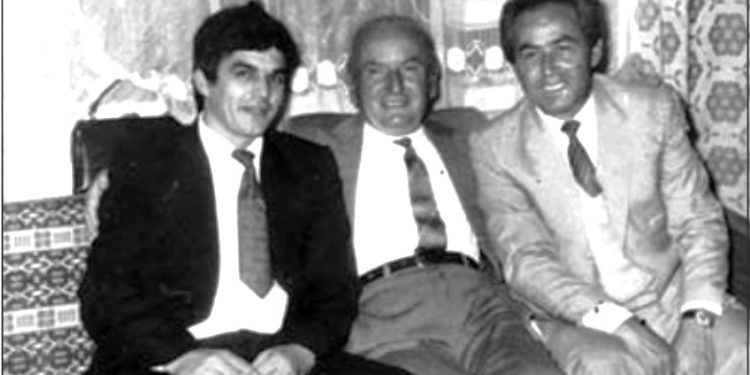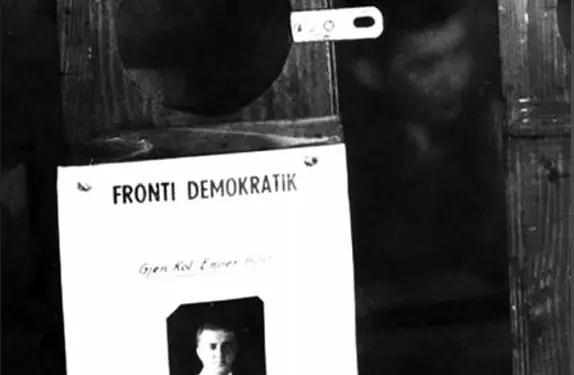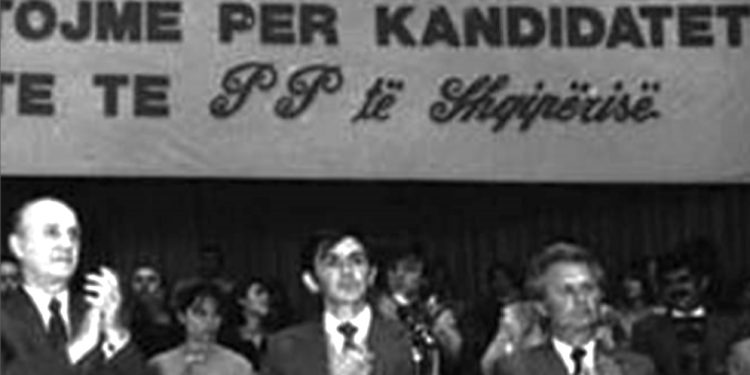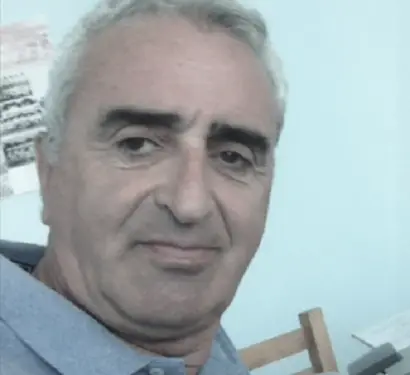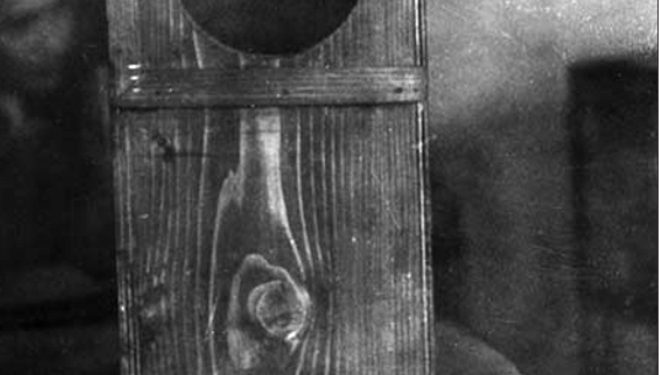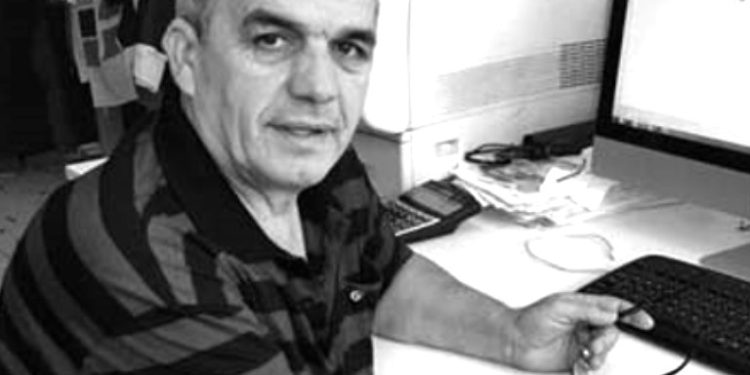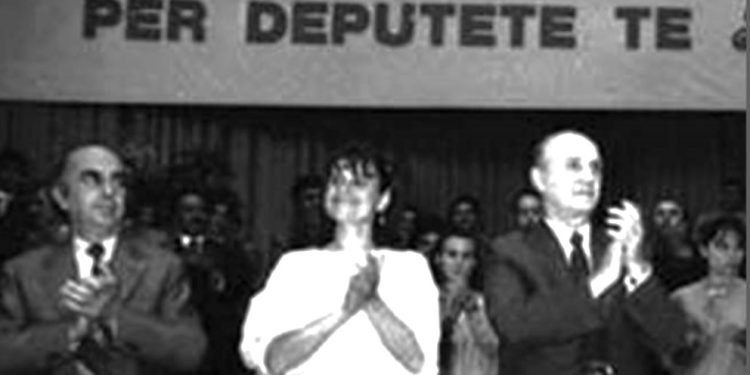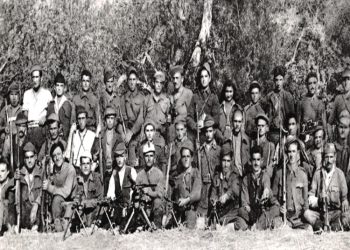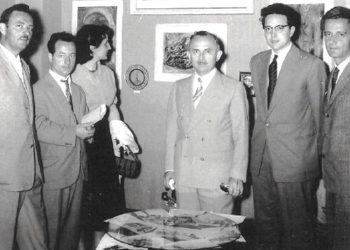From Uvil Zajmi
Memorie.al / “All the votes for the candidates of the People’s Assembly,” “Our votes for the Democratic Front,” these were some of the pre-election slogans during the years of dictatorship. And so it happened: 99.9% of the votes went to the Democratic Front. How could it be otherwise when it was the only candidate in the race? Today, certainly, history has changed. Colorful flags wave in the days leading up to the campaigns: red, blue, pink, violet…! In these recent campaigns for the parliamentary and local elections, fortunately, the walls of buildings and the streets were spared from posters and banners filled with all sorts of slogans and smiling faces, as if they were suffering for this people.
But the pathos of the campaigns is inherited. Banners and photographs of candidates filled socialist Albania before the ’90s, even though there were no alternatives. Only the color red and slogans approved by the Central Committee of the Party of Labor of Albania. Isa Daja is one of the veteran specialists of the famous Decoration of Tirana, who was directly involved in the decorations of electoral campaigns in pre-90s Tirana.
He was just a young man, 15-16 years old, when he started working in 1971. From a simple worker in those early days, he gradually moved up to managerial positions and remained there until 2012 when he left to organize his private activities.
Over the span of forty years in that sector, Daja recalls everything in detail: how the Mosque of Dine Hoxha was transformed and used over the years, how the decorations of the capital and the cities of Albania were realized during elections; who the people were that were entrusted with the festive decorations, etc.
From painters, directors, working women, the red fabric, preparations, the atmosphere, the excitement, the work beyond hours, high payments, and continuous monitoring by the Central Committee of the Party of Labor of Albania to keep the situation under surveillance during election periods.
How was the reserve voting center prepared in silence, where Enver Hoxha and other Party leaders could go? What was written on the banners, the fear of making mistakes, up to the difficulties with the slogans in the Chinese language?
Mr. Daja, what is the story of the “Decoration” of Tirana?
Decoration in general and that of Tirana in particular has functioned since the time of King Zog, so it has a long tradition. After 1945, Decoration was concentrated in several warehouses in the center of Tirana, near Karapicët, behind the pastry shop “Agimi,” at the beginning of “Kongresi i Përmetit” street, now “Rruga e Durrësit.”
Then, at the end of the ’60s, with the banning of religious beliefs, it was moved to the mosque on “Konferenca Peza” street, now “Rruga e Kavajës,” at the Mosque of Dine Hoxha. For many decades, the mosque functioned and was the main center of the Decoration of the capital, the only one until the ’90s. There were around 20 employees: painters, carpenters, tailors, painters, etc.
How important was writing?
Writing was of great importance. Since during those years, there was quite a bit of illiteracy, those who worked on creating its beginnings were educated individuals. I recall Sedat Ohrin, Niko Bonatin, Pelash Toptanin, Filip Lulin, all educated, even abroad. Everything was done with a paintbrush and oil paint, and today’s computer was a projector used to enlarge the letters.
While the printer was a pistol, the use of which began later and primarily served for printing slogans, portraits, flags, etc. They were Italian pistols of all sizes.
Who were the most notable people who worked there?
That job wasn’t done by just anyone. Skilled and honorable people worked there, who, even though they had “not-so-good biographies,” were entrusted and authorized to practice their profession in such a delicate workplace as Decoration. The painters, from Sedat Ohri, Niko Bonati, Pelash Toptani, Filip Luli, Hyqmet Hoxha, Ludovik Verra, Adnan Veseli (Halili), Leka Rrulla, Bedri Seferi, etc., contributed immensely to this enterprise.
There were occasions, especially for national holidays and major events, when well-known painters like Kel Kodheli, Aali Oseku, Edi Hila, Qamil Prizreni, F. Mezini, etc., were engaged, mainly for the portraits of the high leaders of the Party of Labor, particularly those of the Political Bureau of the Central Committee of the Party of Labor.
I believe the election period was the busiest for you. How was the pre-election campaign organized?
Decoration was specialized, but the programs, orders, and guidance were received from the Tirana Party Committee (or Regional Committees) on how the election campaign would be organized and conducted. Buildings, facades, streets, etc., were painted. Ideas for graphics and large posters were created, designed, and approved by a commission with professional painters such as Zamir Mati, Gjergji Marko, and some others, who were very well-known in the field.
A slogan or banner had a maximum of 56 letters, and each letter was valued at 4 lek. The payments were covered and executed by the Executive Committee of the district, and the budget for decoration never ran out. Meanwhile, there was a corner in the neighborhood where photos of the leaders were placed, and there were even special corners in the streets for advertisements that changed according to the holidays and events, such as May 1st, November 28-29, etc.
Were there any cases of mistakes?
Never! There was no possibility of making a mistake. Since the control, responsibility, fear, and care for every letter were significant, it eliminated any chance of error or negligence. This enterprise was led by people of great authority, well-known and experienced, as such a thing was necessary for this sector. The responsible directors of Decoration included: Hasan Alimerko, Nazif Ruli, Perikli Shomo, Bedri Seferi, Nazmi Hoxha, Burhan Cami, Qemal Podgorica, etc.
But there were also many women, from the day it was established until they retired, such as: Bardha Pilkati, Lume Toptani, Luiza Panduku, Angjelina Xhori, Premtika Plaku, Bukurije Daja, who held various functions as painters, printing workers, seamstresses, etc. Not to forget the masters M. Cali, L. Caushi, H. Katroshi, etc.
Was there any special care for the center where Enver Hoxha voted?
During the election period, the center where Enver Hoxha would vote, as well as Mehmet Shehu and Ramiz Alia, was of great importance. For other leaders, there was not the same interest as with the first three, especially with Enver Hoxha.
Although it was known that he voted at Garden 31, near “the Block,” until he left to vote, it was not disclosed where he would go, this relating to physical security and the political situations of the time, as he could change the voting center at the last moment, going to the House where the Party was Founded, which had to be ready for everything, as required by protocol, in places where the main leader of the Party, Enver Hoxha, would go. We stood ready all night, until 6 in the morning, to set up the center where he might suddenly go.
What was written, what were the typical slogans?
In general, they were standard and did not deviate from the format of the time: “Everyone to the polls,” “All votes for the candidates of the People’s Assembly,” “Our votes for the Democratic Front,” “A vote of the people is a bullet for the enemy,” etc.
After the voting was concluded, materials, banners, slogans, etc., were organized in a warehouse, to be ready for use in the next elections. For this, a book was applied, in which the numbers of the banners were coded, to prevent them from getting lost or mixed up, so that they could be easily found when needed.
Was there control from the Party?
Certainly. Instructors from the Party Committee regularly visited our Decoration enterprise to observe, follow, and guide everything, even down to ensuring that punctuation marks were not altered. The texts were prepared by them, and everything needed to be ready a week in advance.
In the room where voting was to take place, a photo of Enver Hoxha had to be placed, a banner related to voting and the ballot box, with the photo of the candidate, who was dressed in red cloth.
Meanwhile, at the voting center, trusted local people organized and carried out continuous volunteer service in the last 24 hours. During the voting process, there were no seals or finger markings used today.
Was this how it was done throughout Albania?
The Decoration enterprise was present in all cities, and for elections, congresses, demonstrations, holidays, and visits from delegations, everyone was mobilized, from workers to painters and managers.
When there were elections for the Assembly, for candidates and deputies of the People’s Assembly, the general way of decorating the cities was known, mainly with flags and slogans, primarily completing the main streets such as “Kinostudio-Kombinat,” “Kongresi i Përmetit” street, Lapraka, the Boulevard, schools, workplaces, ministries, and even stadiums and sports venues.
The assembly and placement of them were carried out by workers from a loading and unloading department, and around 100 towers distributed in the cities were used for their placement (these were the places that held the slogans), where giant posters were placed, which changed according to the campaigns.
How was the work organized?
The work began a month before the election day. The campaign period was without hours, very exhausting, but the payments were also high. At that time, we managed to earn up to 24,000 lek (old) a month, which would mean 4-5 normal salaries. For banner textile material, high-quality fabric produced by the “Stalin” Textile Combine in Tirana and “Mao Ce Dun” in Berat was used.
It was called “kabot,” it was rough, withstood all weather changes, in red color, but also white for posters. The banners ranged from 6 to 8 meters in length for those placed in the streets and up to 90 cm in width. On the red kabot, it was written in white, using a solution prepared with zinc oxide and vinovil, materials that came from Yugoslavia and later from Italy.
How was the giant photo of Hoxha realized?
The large photo of Enver Hoxha (a composition by the well-known photographer Petrit Kumi) was printed on strips of color photographic paper at ATSH (Albanian Telegraphic Agency). Then the unification of these was done by placing them on a Berati fabric, where they were carefully glued with vinovil. This union, measuring 6 x 4 meters, created a sturdy, solid, and weather-resistant canvas, which was then placed on the main facades of the city that required large spaces.
Was it written in foreign languages?
Certainly, but always in cases when a foreign delegation came to Albania, or at congresses, sports events in the “Qemal Stafa” and “Dinamo” stadiums, or the “Partizani” Sports Palace, especially during the time of Albanian-Chinese friendship, or events where personalities from different countries of the world were present and invited.
There were difficulties when preparing slogans in the Chinese language. The translations came from authorized centers, and for the Chinese banners, great care had to be taken in writing since the characters were difficult and, in many cases, we worked without knowing what they said.
From the perspective of an old specialist, how do you assess today’s electoral campaigns?
The campaign, in this case for the elections to the Parliament, has changed in modern times. Although organized by the Central Election Commission, it is done by each party in both financial and organizational aspects.
In every city, there are many specialized decoration points, and even in Tirana, there are several of them, all private, serving the parties in the campaigns they organize. Certainly, there are no more template banners, not just red colors but a variety of provocative, vibrant colors, with plenty of materials and tools, starting from boxes, banners, and so on.
There is no longer just one vote, as there was for the People’s Assembly, which happened once every four years, but now elections are also held for local elections. There are posters that did not exist back then, but there is no longer Decoration that depends on the Party Committee, the Executive Committee, or the Communal Service Enterprise.
Mr. Daja, we thank you for the interview and for all the information you provided for our readers.
I also thank you for giving me the opportunity to remember all those leaders and workers who served in the Decoration Enterprise of Tirana, regardless of the fact that this work served the propaganda of that system, just as it happens today. Memorie.al




